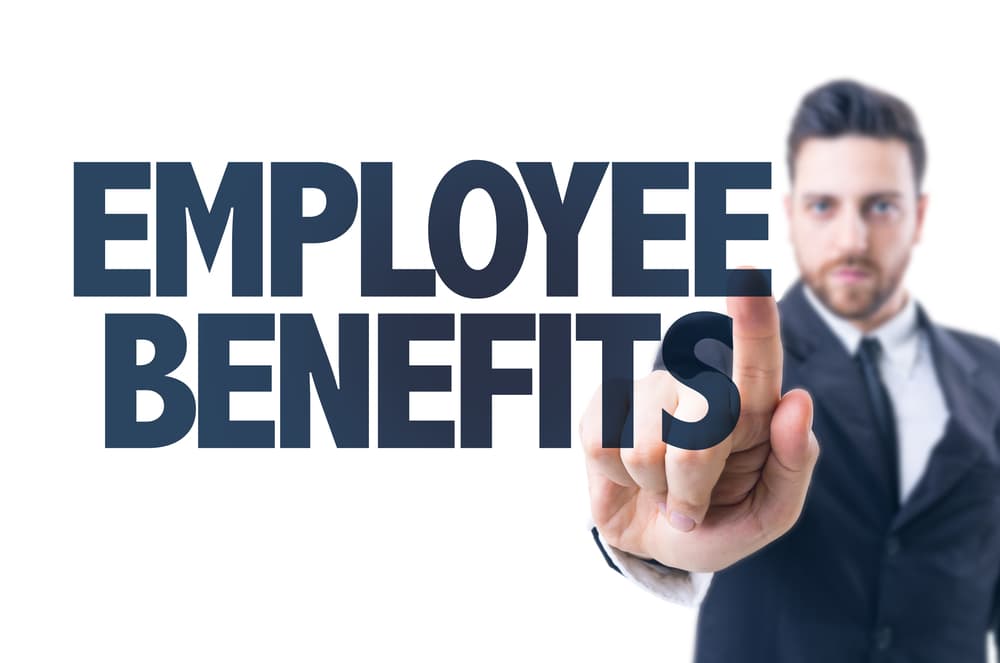In an era of rising inflation and tightening household budgets, it’s surprising that many employees fail to maximize their employee benefits.
In fact, a survey by Voya Financial in 2021 found that 1 in 3 employees do not understand the benefits they selected during the open enrollment, including half of all millennials.
“The results show 35 percent of employed individuals report not fully understanding any of the employee benefits they enrolled in during their most recent open enrollment period. This rises among younger workers — with more than half (54% percent) of millennials reporting they don’t understand their benefits selections,” said Voya.
Benefits are Important Factors for Employees and Employers
Failure to maximize employee benefits is important because research has shown that benefits are important factors in hiring, retention, and company loyalty.
“There’s a reason for all that non-stop media coverage of the talent shortage issue and a candidate-driven market. Job opportunities abound as the unemployment rate reaches levels not seen for almost two decades. Because of this, employees feel confident seeking other opportunities, thus creating a serious turnover issue,” said United Insurance.
United Insurance says research demonstrates the critical role of benefits in the workplace:
- 49 percent of employees, surveyed by AFLAC, will look for a new job over the next year due to confusion or dissatisfaction with benefits.
- 60 percent of employees cited their current retirement benefits as an important reason they remain with their current employer, according to Willis Towers Watson (WTW).
- The WTW survey also found that 47 percent of employees said retirement benefits and 48 percent said health care benefits were important reasons why they joined their employers, those numbers have jumped since 2010 when they were 25 percent and 32 percent, respectively.
- Benefits are better than bucks for some with WTW finding that 59 percent would pay more for enhanced retirement benefits, and 46 percent would forgo added pay for a more generous health care plan.
“While employees still look at pay as the most compelling reason to stay or leave a company, health, and retirement benefits have become a much more significant factor in their decision-making,” said Monica Martin, senior director, of retirement, at WTW. “In this tight labor market, organizations that understand the importance that employees place on these core benefits and that provide highly valued benefit programs can differentiate themselves in their effort to become an employer of choice.”
United Insurance points out that employee satisfaction with benefits pays off as almost half of employees said their company loyalty would increase if their benefit options were customized to meet their individual needs, and avoiding employee turnover saves employers on the 50 percent to 400 percent cost of replacing an employee in annual salary terms.
“To win the talent war and avoid turnover, you need to invest in benefits – the right kind of benefits that your employees will understand and value,” said United Insurance.
Survey Shows Employees Want Guidance on Benefits
The Voya survey revealed that employees are eager for education, guidance, and support from their employers:
- 66 percent indicated they want their employer to help them better understand their employee benefits throughout the year — not just at open enrollment.
- 78 percent of millennials said they would like more communications about their workplace benefits throughout the year.
- 73 percent are interested in support and guidance tools that help them understand how much money to put aside for retirement, emergency savings, and healthcare expenses.
“Supplemental health benefits like accident insurance, hospital indemnity insurance, and critical illness insurance can be confusing — especially for younger workers, who might have enrolled in these coverages for the first time due to the pandemic,” said Andrew Frend, SVP of Product and Strategy, Voya Employee Benefits. “Plus, with COVID-19 shining a spotlight on the need for greater financial security, the challenge for employers moving forward will be connecting health and wealth benefits as their employees continue to have an increasing need for budgeting, planning, and guidance resources.”
Employers Can Help by Making Benefit Explanations Simple
Renee Cocchi, writing in HR Morning, tells employers to make it simple and avoid burying employees in an avalanche of benefits paperwork that is often written in legalese.
“Simplify the info you offer – workers don’t need to know everything, just what’s needed to understand if they need this benefit. Then provide additional info links for a deeper delve,” recommends Cocchi. “Also, make it easy to understand. Take out the HR/Benefits jargon, and make sure it’s in plain English.”
Cocchi reiterates Voya’s conclusion that employers need to commit to creating engaging benefits education programs year-round, and not focus only on the open enrollment period.
Employees Should Take Advantage of the Benefits Offered
Sometimes employees are hyper-focused on their salary and fail to account for – and take advantage of – the benefits offered by their employer.
“Regarding how much one earns at their job, salary is not the only consideration. Employers’ other incentives can play a part in the whole picture of what a worker is receiving. While the amount and type of benefits vary from each industry, company, and position the employee is in, these assets should be calculated when considering the worker’s total compensation,” writes Katie Porter in the financial publication Stache Cow.
The key, of course, is fully understanding your benefits package. Some important incentives your employer offers that you should maximize include:
- 401(k) Match: Free money! We have your attention now and who does not enjoy free money but, shockingly, 42 percent of plan participants earning less than $40,000 per year do not take full advantage of the employer 401(K) match, compared to just 10 percent of employees earning more than $100,000 annually. The 401(k) is one of the best benefits available with the most common match being $1 for every $1 an employee contributes to their retirement plan, up to 6 percent of the employee’s annual salary.
“The 401(k) match is one of the best deals going for employees, providing an immediate guaranteed return per dollar invested,” said Greg Stein, director of financial technology at Financial Engines, according to SHRM. “Maximizing [their] available 401(k) match is a key way for millions of American employees to improve their retirement security.”
Best Engines says best practices among 401(k) plan sponsors include:
o Designing a saver-friendly 401(k) plan and making high-quality independent financial advice available.
o Encouraging employees to not only save enough to get the full company match but to save more when they can afford it.
o Automatically enrolling employees into the plan at the full-match rate, and automatically escalating savings rates over time.
- Health Plan Including Available Dental and Vision Benefits: Some employees fail to completely understand all their health plan benefits options. It’s important to look at out-of-pocket expenses, deductibles, and co-pays when comparing plans. Also, if you have life events approaching, such as welcoming a new baby, then you need to examine your health plan needs. Also, dental and vision benefits can be great perks that save employees money, but they fail to maximize them:
o Past surveys have found that 24 percent of U.S. workers do not enroll in their employer’s vision plan and 30 percent of those who do enroll do not use their coverage to receive a comprehensive eye exam for themselves.
o While dental insurance is considered by many to be a “must have”, research has found that 1 in 4 employees who have dental insurance say they have not been to the dentist in the past 12 months for regular checkups and routine cleanings and that 50 percent felt their employer did not provide enough information about what is covered under their dental plan.
- Other Health Benefits: Your health, dental, and vision insurance plans may be just part of the health benefits offered by your employer. Check with your HR department and benefit plans to see if you can take advantage of:
o Health Savings Accounts (HSAs): Allow employees to contribute untaxed dollars to pay for deductibles, copayments, and other medical expenses.
o Flexible Spending Account (FSA): Contribute pre-tax dollars to an account to pay for qualified health expenses. Unlike an HSA, these accounts are “use-it-or-lose-it” so employees can lose out if they contribute more in a given year than their health expenses.
o Preventative Health Care: Some companies offer wellness benefits that will pay for annual physicals, immunizations, tests, screenings, and more.
o Disability Insurance: Some employers offer their employees the option of short-term (usually 6 to 12 months) and long-term disability insurance that provides income to a worker if they are unable to work because of an illness or disability.
o Family and Medical Leave: Under the Family and Medical Leave Act (FMLA) employers with 50 or more employees must offer up to 12 weeks of unpaid, job-protected leave per year for family or medical reasons.
- Other Lifestyle Benefits: Since the COVID-19 pandemic, employer lifestyle benefits have become even more important. While employers may offer mental health, financial wellness, and other benefits, CNBC reported that some 32 percent of employees say they are confused about their benefits package.
“Employees generally know less about perks beyond retirement plans and health care – and may not use them as much,” says CNBC.
Employees should maximize the following benefits if offered:
o Financial Wellness Programs: Training and support can range from education on debt reduction, student loan repayment, credit building, and budgeting.
o Mental Wellness Programs: A “mental health day” now and then can make for a more productive workforce. Companies are offering mental health training, assistance for therapists, dedicated relaxation rooms, and other strategies to reduce employee stress.
o Paid Days Off, Holidays, Vacation Time, Sick Leave, and Sabbaticals: Your company has a benefits policy that will include some or all of the above. Americans fail to take advantage of paid vacation days with a 2019 study finding that 786 million U.S. vacation days went unused each year. CNBC reported that 236 million of those days were forfeited completely (did not carry over), resulting in $65.5 billion in lost benefits.
o Lifestyle Stipends: Some companies offer employees stipends for lifestyle purposes such as learning or improving on work-related skills. Other stipends can apply to food, travel, family, and pets.





